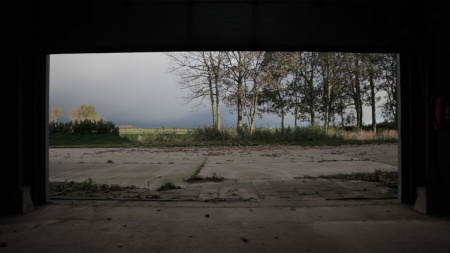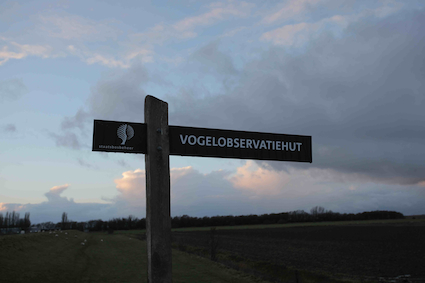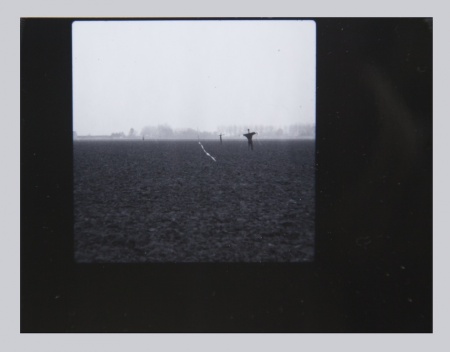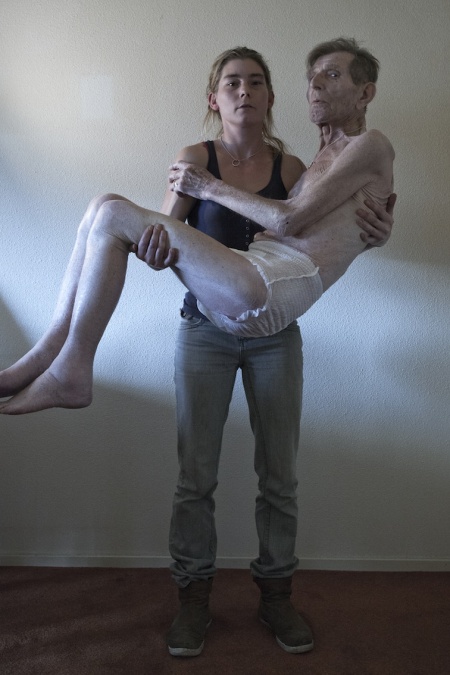User:Astrid van Nimwegen/thesis draft1
Introduction
Today is the day that I finally have to tell things that are ‘true’ about my work.
Let me first say that form and content are inextricably interwoven with each other and it is perhaps most urgent to find balance of the latter two. (All formal choices affect content and visa versa and thus are exchangeable)
Structuralism -> balance <- Intuition
Technique -> balance <- Nature
Form -> balance <- Content
We can only create parameters to give the sublime space and time.
We can control everything in order to let ‘chance’ take place; however we can never control the ‘sublime.
‘Rilke hopes his poems may wake to higher life in the soul of people’
p.88 Letters to a young Poet – Rainer Maria Rilke
Maybe the great problem in writing this thesis is, that I am not a worthy Poet; as only a good Poet can talk about the true, underlying content of the work throughout a methodology he find within the writing itself – This methodology has sameness and is therefore equal to an Artwork itself – hence Poetry already is an Art form in its own right.
So first I have to find things that I can discuss such as technical and formal matter, the question how to contextualize the work within Art History (for example the reference the work has towards traditional painting as well as the language of cinema I use). And speak about how and where I could present the work, as well as dealing with the inevitable cultural, international, professional field which is already out there.
The problem with only discussing above issues is that I cannot identify myself, and my work, completely within such a mere, strict formal document. That is why I have chosen to place descriptions about my own work in between as well as personal stories about my individual perception of things that matter to me. When a pure, careful description on what you see is given, as for example with ‘the aesthetics of dying’ (p.?), I think the purity within this photograph even more evoke the underlying content then when one would try to explain things over it. (Thanks S. and George Perec)
The aim of this thesis is mainly to articulate my thriving practice in a clear language and, whilst writing, develop this language. In this document I try to be as precise as possible in my writing in order to come closest to this sameness in methodology in both writing and practice.
Chapter one
Everyday I record the same wide shot of a garage door. The video begins with the garage door closed; then the door opens as if the curtains of a stage open. A colourful Dutch landscape becomes visible. The atmosphere is quite melancholic and isolated, as if the drama already is there within the staging itself. The duration of the shot ensures that each element in the frame is given attention. A single leave blows away; the trees move slowly in the wind; the treetops in the distance are covered with morning sunlight. Then the door closes again after two minutes. On one day we see it raining, on another day it is dry but windy, sometimes a dog walks by.
Within the last years I developed a working method in which I mostly performed in my black and white videos, there was a certain strength and purity in those images and also my interest towards the complexity within our existence came clearly forward through my simple, minimalist video-registrations. But I wanted to move beyond the performancevideos I have been working with, mainly because of the inescapable reference they had with '60s and '70s performance Art. So after my video piece recorded in 2010 called ‘the Gravediggers’ in which I stood naked in a farming field while four man, dressed as gravediggers, digs a circle around me, I decided to step out of my videos and started to work more with other characters. This was also the moment when I just had moved back to the island where I grew up and came to live in the middle of the Dutch polders, the influence of this flat, isolated landscape is clearly visible in my work. I think ‘the Gravediggers’ piece especially raised a lot of questions about theatre and staging on which I wanted to research further.
A red line in my methodology is that I always choose a frame in which every element is deliberate but by this I also create a space where ‘chance’ can take place. Somehow the chance becomes in this way also a deliberate choice. I recognize a structuralist side of my methodology in the creation of parameters behind my work. Next to this formal side of my methodology there also is a very strong intuitive side, and this latter is maybe the most important side that I truly want to follow and is closest to my heart as an artist.
So now I am back to my minimalistic way of working in which I play literally with the staging of the everyday and also with endurance and repetition. I use my intuition more to recognize the poetic, minimalistic portraits of the everyday and try to find a way to reveal the complexity of life through a very simple manner.
Making of a ‘Garagedoor’ video
Currently I am working on a series of 'Garagedoor videos' in which a garagedoor opens and an isolated, Dutch polderlandscape becomes visible, after two minutes the garagedoor closes again. I collected around twenty videos of the same garagedoor on different days till so far. With the last three videos I recorded the sound on a separate device; first I used one microphone with a boom but monosound from one direction (outside the barn) is not so exciting; since the barn functions as a kind of resonance box. So the next step was record stereo. Since every little detail in the shot needs attention I am also busy arranging a red-camera to record the shot technical perfect and as precise as possible. I think if the shot is captured as sharp as possible on a red-camera, all little movements and reflections in the small puddles of water in the frame, becomes even more convincing. The same thus counts for the sound. Last week I watched the video in a cinema-setting and there I was amazed by the stereosound, but it was only coming from the front of the space, so for the last video I captured the sound on four channels in order to create surround sound in the same cinemaspace to see if I can create a more total experience in the environment. The scale of the video is an important matter. I not only watched it in a cinema but also in the 'Sub-urban videolounge' because there it is possible to project wall-filling. And that as well made a big difference from watching just a projected frame on a wall(like in our project space). I think the work will be amazing if installed in a big room with four videos on four big walls with surround sound. The room is dark and then suddenly one garagedoor opens. After closing again the room will be dark for a few minutes again and then a garagedoor on one of the other walls will open.
Bird-spotting houses
My interest in bird-spotting houses started when I noticed the wooden cabin along the road that the bus passes when I travel to Rotterdam and back. Every time passing that cabin I wonder what this place is like and I promise myself more than a thousand times that I will visit this place someday.
I walk across the wooden bridge towards the bird-spotting house, not sure yet what it exactly is that I am looking for. The reed at the sides of the bridge blows in the strong wind. When I open the wooden door, I immediately understand my urgency to visit this place. It appears there are five long, narrow windows inside the cabin. They can be opened by lifting the wooden planks in front of them and overlook the beautiful, quiet nature reserve behind it. This cabin gives view on the ‘Haringvliet’; this is the name of the water along the northern coastline of the island Goeree Overflakkee.
This was the starting point for a series that consists of videos of multiple bird-spotting houses on the island where I live. The camera is positioned towards the wooden windows on a tripod inside the house and captures the viewings outside with a wide lens. I capture the inside as well as the outside of the houses in which I try different angels of recording, looking for symmetry and precision. In this first ‘Bird-house’ it appeared that in one shot, the outside of house takes in almost the same space as the ‘Garagedoor’ does in its frame, only the house refers more to the language of sculpture while the Garagedoor, in a certain way, becomes more a theatre and speaks the language of cinema. The house is very solid while the Garagedoor is transparent. I wonder what will happen if those two are projected opposite each other in the same space.
4/03/2013
The Scarecrow
She slightly opens the door of the bird-spotting house and listens closely if she hears any bird sounds… everything is quiet except the rustling sound of reed, blowing in a gentle spring breeze. She tightens her black blindfold one more time and pushes the heavy wooden cabin door further open. With all her strength she starts to pull the big scarecrow out. One, two, three steps forward, eight to the left; the scarecrow draws traces in the loose sand behind her, one, two, three, four, five steps to the right, a few more forward. She stops to catch some breath, wipes the sweat of her forehead and turns the scarecrow with the feet towards the hole, she grabs the buckle that is meant as its head, and pushes the scarecrow up till it stands straight into the ground. With her bare feet she pushes some loose sand into the hole. Suddenly the feeling of fine-grained sand between her toes reminds her of two days ago when she brought out the other scarecrow. Out of nowhere the noise of three birds that flew right past her head, scared her so much, she rapidly dropped the scarecrow with its red bucket and blue pullover and ran all the way, from the other side of the cabin, back to the heavy, wooden door. She was pretty sure the birds followed her immediately, meanwhile whistling incredibly loud, as a sign they would attack her if she did not run fast enough. She slammed the door behind her. Inside this tiny, old wooden cabin, she was safe. For almost two days she stayed inside, working feverishly on four new scarecrows. Today, when she just placed the last one into the ground surrounding the bird-spotting cabin, the tiredness falls upon her like a heavy blanket.
1/03/2013
The aesthetics of dying - in remembrance of my grandfathers broken eyes -
A woman in her mid twenties is positioned in the centre of the frame. She stands firmly against a white wall; her feet solid placed on the red, somewhat brownish carpet. She faces the camera with a quite indescribable expression however her gaze looks somewhat grievous. A necklace with a silver ring hangs around her neck. She wears a sleeveless blue shirt and grey trousers. Standing there while holding the naked, old man in her arms like a baby. His pale skin has the structure and fragility of old parchment. He wears a big white diaper and looks at the camera from the corner of his eye. You cannot say if he is scared or just confident in the arms of this young woman. He also wears a silver necklace with a ring around his neck. There is some similarity visible between those two characters, something in the nose and mouth makes you question if they are relatives or not.
27/02/2013
Notes on interview Antoni Jach with TJ Clark - about his book ‘The sight of dead’ – The wheeler centre / Books writing ideas: (http://wheelercentre.com/videos/video/tj-clark-the-art-historian-and-the-poet/)
Clarks book ‘The sight of death’ is a three months study of two paintings from Poussin; ‘Landscape with a calm’ and ‘Landscape with a man killed by a snake’ Clark, an art-historian and writer, made his descriptions of these paintings into poems. The book gives an interesting insight in painting in general (AJ) and talks about how it relates to poetry and words. In the interview they discuss the difference between academic writing about Art and poems about Art. Clark reads some poems from his book 'the sight of death'. In the end he questions Nietzsche's statement 'Art is the enemy of truth' and about how his other book is arguing against that, stating that 'Picasso, (like any artist), must have had a notion of 'truth'...
‘I, who make my profession from mute things’ Clark quotes Poussin’s statement here. TJC: ‘I love paintings muteness; its muteness gives us such a rich encounter of the world. Painting reminds us that we don’t need words to have complex thoughts, feelings, experiences and perception.’
A.J: ‘What about the way titles interfere with the muteness?’ TJC: ‘That was somehow lesser a problem in Poussin’s days where we had a sort of shared textual universe what a painting is going to be of; a certain set of prescribed religious themes/stories and a certain set of images drawn from our shared classical culture’ ‘Now, where we (most of us) don’t have that kind of depth of shared knowledge of a certain textual universe, there is this need, we all have, to go to the title for guidance.’ AJ: ‘because of the fear we have that we don’t get enough understanding of the work.’
TJC– reads a poem called ‘Pictures in Madrid’ He uses a lot of metaphors and detailed descriptions in his poems. They are factual recordings of what he sees but he also gives his inner feelings and imagination and thus interpretation of the painting he studies.
AJ: ‘What can you do in poetry and intimate prose in relation to art what you cannot do in academic writing about art?’ TJC: ‘Poems about painting are a bit of a trap where I indeed fell into. What provoked the writing of the first poem was that I completely was into the world of the picture.’ ‘I tremendously care about poetry, I think of poetry as being an attempt to use the full materiality of language to get hold of experience somehow, rhyme,; rhythm; the actual sort of ‘stuff’ of the spoken word. Writing about painting tries to get the mere materiality of painting over into words.’
AJ: ‘Do you think poetry maintains the enigmatic nature of the painting? That it doesn’t over-explain, what is the problem with academic prose and even intimate prose, that it explains too much’ TJC: ‘Yes, we do not know what is happening in a painting. You can say a lot but in essence ‘nothing is happening’ in a painting; that’s so marvellous about a painting.’ AJ: ‘In Poussin’s universe there is this calm and yet there is a disturbances; there seems to always be this moment of disturbance.’ TJC: Poussin works enormously hard to make us believe there is something happening; that a process is on the way.’ ‘Off course that is exactly the fascination of the painting, that is a moment of appalling drama and yet absolute impassiveness of nature.’
The difference between Brueghel and Poussin: ‘Brueghel with his complicated pessimism does really think the ultimate ?over-reacher?; his death is utterly insignificant; nobody notices. Poussin is different, nature doesn’t care, is unruffled but the human world is ?stirling? into reaction in Poussin.’
They discuss 9/11: How people were constantly trying to impose words and putting meaning upon the image. The tension between the images and the word. - AJ AJ: ‘There is a fear of disappointment in the images with perhaps is a fear of disappointment in art history in general? And the doubt if investing is still worth it and is it given back?’ TJC: ‘I was aware of investing too much in Poussin but didn’t know where else to invest in.’
Current project about Picasso / Nietzsche - Power and Truth AJ: ‘What is your interest in Picasso and the truth of nature and painting?’ TJC: In ‘The genealogy of Morality’ a great book by Nietzsche, he states that: “We ethos have to learn to do without truth. That is why Art may be what we need; because Art is the enemy of truth, art is that part of human practice and self-knowledge that knows that life is an illusion” - Nietzsche ‘I think my book is about the question, illusion all the way down, that we will never know reality; if we try it, we panic because reality is so appalling’. So the book is about the question; ‘is Picasso a Nietzschean painter?’ Picasso came to believe that the art of the modern age had to live without the notion of truth to the world. And the idea that we invent a world; and the more completely we invent a world, the more we reform a vision which is completely our own.’ ‘My new book is trying to argue against that. I am trying to argue actually that Picasso, like any artist, I think, had a notion of truth. His notion of truth is a certain ?unbridgeable? sense of space; a space he found inhabitable, familiar, believable, shareable, and the guiding thread for his art with all its contemporariness and murderousness and fragmentation of so many possible appearances, still all the way through, I think he is sort of holding hard to a notion. I will assemble a world which has a space that I believe in and believe to be true to human experience and to human habitation, to a sort of ‘life in common’.
Bibliography:
-‘The Everyday’ – Stephen Johnstone
-‘Everyday life and Cultural Theory – Ben Highmore
-Letters to a young poet - Rainer Maria Rilke
-'The sight of death' - TJ Clark (relation of my videos to painting)
-‘Tacita Dean’ – Tacita Dean
-‘Pina Bausch’ – Wim Wenders
-George Perec
[language of the cinema]




